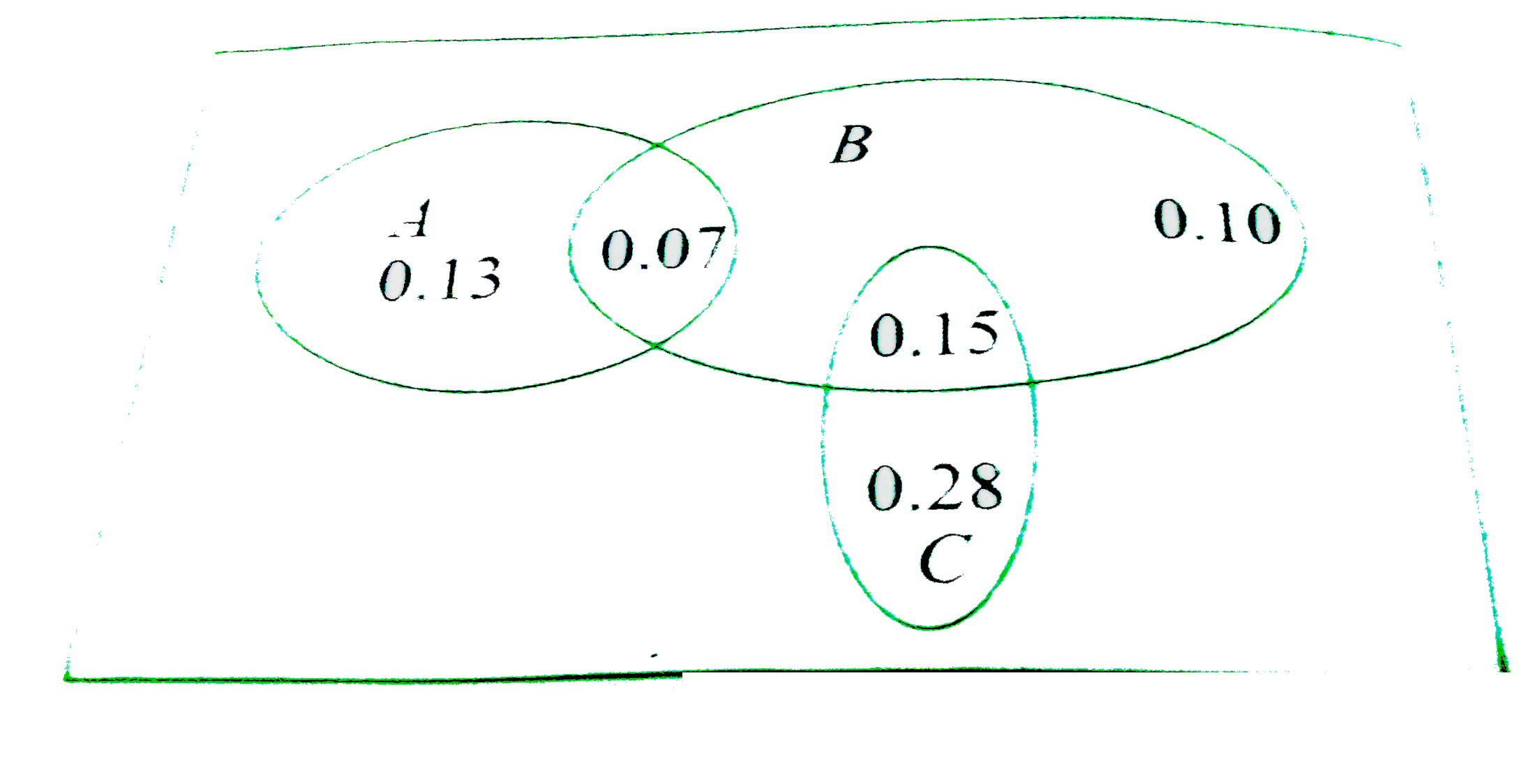The accompanying Venn diagram shows three events, A, B and C and also the probabilities of the various intersections [for instance,P(A∪B)=0.7]. Determine
(i) P (A)
(ii) P(B∩−C)
(iii) P(A∪B)
(iv) P(A∩−B)
(v) P(B∩C)
(vi) Probability of exactly one of the three occurs.
To solve the problem step by step, let's analyze the given information and calculate the required probabilities based on the Venn diagram.
Topper's Solved these Questions
- PROBABILITYBOOK - NCERT EXEMPLAR ENGLISHCHAPTER - PROBABILITYEXERCISE - Long Answer Type Questions
6 Videos
- PROBABILITYBOOK - NCERT EXEMPLAR ENGLISHCHAPTER - PROBABILITYEXERCISE - Objective Type Questions
12 Videos
- PRINCIPLE OF MATHEMATICAL INDUCTION BOOK - NCERT EXEMPLAR ENGLISHCHAPTER - PRINCIPLE OF MATHEMATICAL INDUCTION EXERCISE - OBJECTIVE TYPE QUESTIONS
5 Videos
- RELATIONS AND FUNCTIONS BOOK - NCERT EXEMPLAR ENGLISHCHAPTER - RELATIONS AND FUNCTIONS EXERCISE - True /False
5 Videos
Similar Questions
Figure shows three events A,B,C and also the probabilities of the various intersections (for instance P(A∩B)=0.07 ) determine P(A) (ii) P(B∩C) (iii) P(A∩B) (iv) P(A∩B) (v) P(B∩C) (vi) probability of exactly one of the three events.
View SolutionThe following Venn diagram shows three events, A, B, and C, and also the probabilities of the various intersections.
Determine
(a) P(A)
(b) P(B∩¯¯¯C)
(c ) P(A∪B)
(d) P(A∩¯¯¯B)
(e) P(B∩C)
(f) Probability of the event that exactly one of A, B, and C occurs.

View SolutionIf A and B are mutually exclusive events, P(A)=0.35 amd P(B)=0.45, then find
(i) P(A')
(ii) P(B')
(iii) P(A∪B)
(iv) P(A∩B)
(v) P(A∩B')
(vi) P(A'∪B')
View SolutionIf A and B are two events such
P(A)=12,P(B)=13andP(A∩B)=14,then find
(i) P(A/B). (ii) P(B/A).
(iii) P(A'/B). (iv) P(A'/B').
View SolutionA, B, C are any three events. If P(S) denotes the probability of S happening, then P(A∩(B∪C))=
View SolutionA and B are events such that P(A)=0.42, P(B)=0.48and P(AandB)=0.16. Determine (i) P(not A), (ii) P(not B) and (iii) P(A or B)
View SolutionIf A and B are independent events such that P(A)=0.3 and P(B)=0.5, then find the values of:
(i) P(A∩B) (ii) P(A∪B)
(iii) P(A/B) (iv) P(B/A)
View SolutionLet A and B be independent events with P(A)=0.3and P(B)=0.4Find(i) P(A∩B) (ii) P(A∪B)(iii) P(A∣B) (iv) P(B∣A)
View SolutionLet A and B be independent events with P(A)=0.3and P(B)=0.4Find(i) P(A∩B) (ii) P(A∪B)(iii) P(A∣B) (iv) P(B∣A)
View SolutionA and B are any to events such that P(A)=0.3,P(B)=0.8andP(A∩B)=0.16, find the probability that exactly one of the events happens.
View Solution